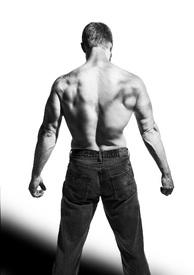"Intensity" in HIIT or LISS

kapoorpk
Posts: 244 Member
When we refer to intensity of a cardio as in the HIIT or LISS, isn't is always referring to the % age of max HR you get up to vs. speed or resistance? Meaning, you could be doing LISS but with high resistance and your HR will rise to something a lot higher than what it would be just walking.
So, when doing LISS - does the low intensity refer to the speed with which you do the exercise, i.e. running or walking or the %age of HR that is achieved as it would be if you ramped up the resistance on low speed climb on an elliptical.
I am thinking it refers to the speed because isn't it the speed which which you require energy that dictates the source from which it is recruited? Meaning, quick energy needs are filled by body's carbs vs. slower energy needs may come from fat.
Clarification would be appreciated!
Thanks
So, when doing LISS - does the low intensity refer to the speed with which you do the exercise, i.e. running or walking or the %age of HR that is achieved as it would be if you ramped up the resistance on low speed climb on an elliptical.
I am thinking it refers to the speed because isn't it the speed which which you require energy that dictates the source from which it is recruited? Meaning, quick energy needs are filled by body's carbs vs. slower energy needs may come from fat.
Clarification would be appreciated!
Thanks
0
Replies
-
anyone?0
-
Not exactly answering your question but this discusses both
http://web.archive.org/web/20130829010149/http://dynamicduotraining.com/wordpress/15-experts-weigh-in-on-hiit-or-liss-cardio-for-optimal-fat-loss0 -
IIRC, It's typically defined either in terms of heart rate or percentage of maximal oxygen consumption.
Is there a reason you're asking outside of curiosity (ie a practical application)?0 -
Thank you both.
My quest is to strategize the least damaging cardio to muscle that is most helpful to keep heart stronger.
For example, if intensity referred to the speed with which I used an elliptical, then the hypothesis I was exploring would have held true where I would have improved my heart rate at low speed but high resistance. It would have meant that I burn more fat, less glycogen yet improve the heart rate.
But, if intensity is referred to as the %age of max heart rate, low speed high resistance or high speed low resistance makes no difference. They both would burn fat and glycogen the same.
Would you agree?
Thanks for your time.0 -
It's the intensity, as reflected by the HR. Not the speed.
Because your heart as a muscle, can have it's own level of resistance you might say.
Would you expect the weight you push with difficulty with your arms to provide much improvement for your legs? No, and if you kept using it, it wouldn't even be effective as maintenance, you would lose strength in legs to match the load you put on them.
No, so the speed you can run a distance can get to the point it's still a hard workout for the muscles, but the heart/lung and whole aerobic system aren't being stressed anymore.
It's actually easier to get the aerobic system built up before you either lose weight or gain enough muscle to keep pushing it. And it has the ability to get to top end faster than lifting, at which point you have to do a whole lot of things very correct to keep eeking out improvements, much like experienced lifter getting more weight on the bar.
And that's why it's not actually a good measurement for % of HRmax, but as SS mentioned, % of VO2max.
HRmax is pretty genetic, and lowers with age, less so if you've kept aerobically fit. Mine's still a tested 194 at age 45, silly 220-age is obviously very off.
Also, your lungs can do more than your heart or maybe muscles can do.
But VO2max can be increased with aerobic exercise, and specifically with the right cardio. That and the anaerobic threshold too.
Barring that ability to know your VO2max (unless you have a HRM with self-test and viewable stat like nicer Polar's, or submaximal test), the next best way is using % Heart Rate Reserve method rather than % HRmax.
HRR takes into account your resting HR, which is a good indicator of fitness. And sadly the HRmax too, which is likely estimated, but at least half the range can be measured accurately.
Here is way to do that, but you'll need your first thing in morning resting HR, after heart slows down from alarm clock. Count for whole 60 seconds too.
www.calculatenow.biz/sport/heart.php?
Oh, that misnamed fat-burning HR zone, is actually the Active Recovery HR zone as it's been known longer. That's what you could do the day after lifting with the same muscles and hopefully not add extra load to muscles trying to heal.
Any intervals in to the anaerobic zone would be useful for your heart.
You could start off your lifting session in Recovery HR zone for warmup and good aerobic training.
Lift.
Follow up with some intervals between Anaerobic for 30 sec, and Recovery for 60 sec, for 10 min, then 10 min at bottom of Recovery zone.
Now, good lifting with same muscles, might make hitting Anaerobic very hard. Meaning your muscles are getting workout trying to push heart hard enough - but heart may not be getting a workout.
As to thought you could push harder but slower, if it's still aerobic, then the HR pretty much dictates ratio of carbs : fat. You reach the same HR, you are hitting the same ratio, no matter what mix of speed or resistance you did.
Though, usually the higher resistance causes you to use fewer muscles (run up stairs, where does it burn), which means those few are actually burning more carbs to accomplish that higher work load, but others can now burn more fat since not used as much. Probably even-steven.
But don't worry, you burn off a bunch of glucose in muscles, you'll bun the same grams of fat about no matter where in the aerobic range you are - but after your next meal, more carbs can be shuttled off to refill those glycogen stores. More stores to fill, quicker your blood sugar goes down.
Quicker blood sugar goes down, quicker insulin goes down.
Quicker insulin goes down, quicker you are back to resting fat burning mode. So still burning more fat from your effort - just not during the workout.
And that type of interval workout after 3 lifting sessions weekly, or more, would meet the recommended levels of aerobic exercise for heart health.
Oh, to first post about quick or slow and what energy source, again HR gives indication there. Bottom to middle of Aerobic HR zone is usually where you are 50:50. Your heart can beat slower to provide the O2 for fat oxidation. Beats faster to provide more true, but about there is where it's losing battle. Hitting Anaerobic zone, if indeed correct for you, is total carb burn.0 -
Thank you both.
My quest is to strategize the least damaging cardio to muscle that is most helpful to keep heart stronger.
For example, if intensity referred to the speed with which I used an elliptical, then the hypothesis I was exploring would have held true where I would have improved my heart rate at low speed but high resistance. It would have meant that I burn more fat, less glycogen yet improve the heart rate.
But, if intensity is referred to as the %age of max heart rate, low speed high resistance or high speed low resistance makes no difference. They both would burn fat and glycogen the same.
Would you agree?
Thanks for your time.
It really doesn't matter whether or not you burn fat or carbs during your training bout in terms of how that impacts long term fat oxidation.
As far as muscle preservation goes that's also something that really is going to be context dependent. A generic recommendation would be to make sure you're lifting weight at least 2-3 times per week at adequate intensity and don't create stupidly huge calorie deficits coupled with several hours of cardio and beyond that I wouldn't even worry about it, especially if you're not already quite lean in which those concerns might magnify a bit given that you would have less room for error with managing those variables.
Some variables you should focus on specifically as it pertains to cardio exercise for fat loss in the context of your training program would be, in my opinion:
1) How much do I do?
2) What type do I enjoy?
3) How does my cardio effect my lifting performance (due to recovery and possibly joint impact issues/etc) and based on this answer how I do I place that in my program (frequency, duration, intensity, and timing) to minimize the effects it may have on my lifting?
The intensity piece is a variable because of the above factors but not because of the need to manage substrate utilization during training.0 -
The difference for me is that HIIT might burn more calories per unit of time vs LISS. More effort but you get it done faster.0
-
Thanks SS. I think if I hear you right, in the long term just the weight training itself will reduce fat, which is fine. I just proved your hypothesis to be working for me as well. From 9 months ago, my BF% has gone down to 15% from 18% or so and weight has increased by 12-15 pounds. So, it seems like its all muscle. My progressively increasing lifts also support this calculation as my strength as significantly increased.
All this while staying on maintenance. But, I also calculated my new TDEE based on my new weight and it has gone up by a 200 calories. So, if I stay at my previous maintenance calories, I am actually on a deficit for my new weight.
I workout on a 2 day split...2 days of weight training and 1 day rest, so on and so forth. I have been doing the HIIT on the rest days, which is what I was trying to re-assess. Looks like what I have been doing is progressing well and I might be splitting hairs.
So, I think, I am going to stick to my routine, progressively increase resistance every week or so and just do the HITT on off days. 30 second work, 60 second rest intervals for just 20 minutes.
Thanks for your input.0 -
As you seem yo have had your question answered, I am locking the thread for admin purposes so we can track active threads better. If you have any further questions or want to make further comments, please PM either myself or SideSteel, including a link to this thread, and we will unlock it so you can do so.0
This discussion has been closed.


